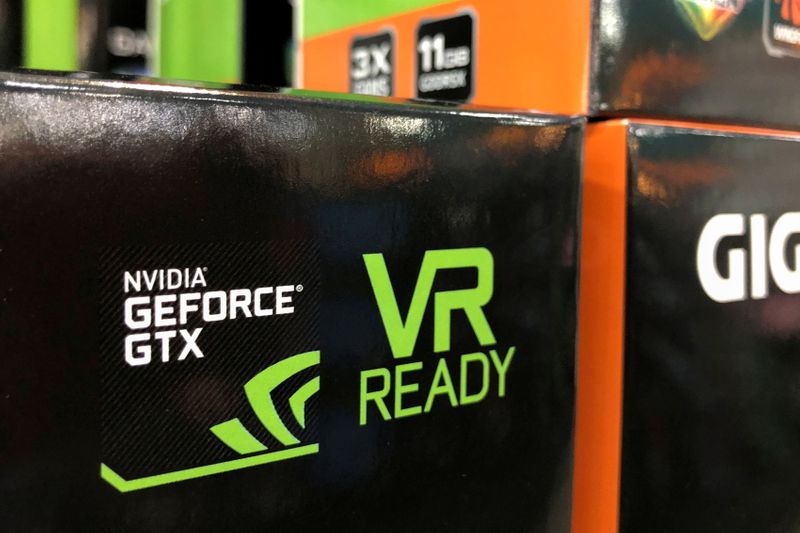Intel stock extends gains after report of possible U.S. government stake
SAN JOSE, Calif. - NVIDIA (NASDAQ: NVDA), a semiconductor giant with a market capitalization of $2.85 trillion and an impressive 75% gross profit margin, has announced the release of two new personal AI supercomputers, the DGX Spark and DGX Station, designed to bring the capabilities of the NVIDIA Grace Blackwell architecture from the data center to the desktop. These systems are targeted at AI developers, researchers, data scientists, and students to enable them to build, refine, and deploy large AI models either locally or on cloud-based platforms. According to InvestingPro, NVIDIA maintains a perfect Piotroski Score of 9, indicating exceptional financial strength and operational efficiency.
The DGX Spark, touted as the world’s smallest AI supercomputer, is powered by the NVIDIA GB10 Grace Blackwell Superchip. This chip features an NVIDIA Blackwell GPU with fifth-generation Tensor Cores and FP4 support, capable of delivering up to 1,000 trillion operations per second. The GB10 Superchip also employs NVIDIA NVLink™-C2C interconnect technology for enhanced CPU and GPU memory model performance.
On the other hand, the DGX Station is the first desktop system to incorporate the NVIDIA GB300 Grace Blackwell Ultra Desktop Superchip. This superchip includes an NVIDIA Blackwell Ultra GPU and is connected to a high-performance NVIDIA Grace™ CPU. The DGX Station boasts 784GB of coherent memory space and is equipped with the NVIDIA ConnectX®-8 SuperNIC for optimal AI computing workloads.
Both systems are part of NVIDIA’s full-stack AI platform, which facilitates the transition of models from desktops to the DGX Cloud or other accelerated infrastructures with minimal code changes. Users also gain access to NVIDIA NIM™ microservices through the NVIDIA AI Enterprise software platform.
Reservations for the DGX Spark systems are open as of today, while the DGX Station is expected to be available from partners like ASUS, BOXX, Dell, HP, Lambda, and Supermicro later in the year.
NVIDIA’s founder and CEO, Jensen Huang, emphasized the transformation AI has brought to computing and the emergence of computers designed specifically for AI-native developers and applications. He stated that these new DGX personal AI computers would enable AI to span from cloud services to desktop and edge applications. The company’s strategic focus on AI has driven remarkable growth, with revenue surging 114.2% in the last twelve months. InvestingPro analysis reveals 20+ additional key insights about NVIDIA’s financial performance and market position, available exclusively to subscribers.
NVIDIA, listed on NASDAQ: NVDA, is recognized as a leader in accelerated computing, with a robust financial foundation reflected in its current ratio of 4.44 and strong overall financial health score. These new products are part of the company’s ongoing efforts to empower developers and researchers in the AI field. For investors seeking comprehensive analysis, InvestingPro offers detailed research reports covering NVIDIA’s valuation, growth prospects, and competitive position among 1,400+ top US stocks.
This article is based on a press release statement from NVIDIA.
In other recent news, NVIDIA has unveiled a new range of energy-efficient AI factory switches, known as NVIDIA Spectrum-X™ and NVIDIA Quantum-X, during the GTC event. These switches are designed to connect millions of GPUs across AI factories, promising significant reductions in energy consumption and operational costs. In another development, NVIDIA introduced the Blackwell Ultra, an advancement in its AI factory platform, which is expected to enhance AI reasoning and scaling inference capabilities. The platform includes the NVIDIA GB300 NVL72 rack-scale solution and the NVIDIA HGX B300 NVL16 system, aiming to improve AI service quality with increased computing power.
Additionally, NVIDIA has launched NVIDIA Dynamo, an open-source software designed to enhance the efficiency and scalability of AI reasoning models. This software is reported to double the performance and revenue of AI factories using the same number of GPUs on the NVIDIA Hopper™ platform. Furthermore, NVIDIA has announced collaborations with telecom giants like T-Mobile and Cisco to advance AI-driven 6G development. These partnerships aim to integrate AI into next-generation wireless networks, enhancing connectivity for devices such as phones and autonomous vehicles.
In analyst news, Truist Securities has maintained a Buy rating on NVIDIA with a price target of $205, highlighting a positive outlook on the company’s prospects. The analysts noted that NVIDIA’s GTC event could serve as a positive catalyst for the stock, focusing on new chip and computer architectures and emerging AI models. These developments reflect NVIDIA’s continued efforts to advance AI infrastructure and performance, as well as its collaboration with industry leaders to drive innovation in both AI and telecommunications sectors.
This article was generated with the support of AI and reviewed by an editor. For more information see our T&C.
